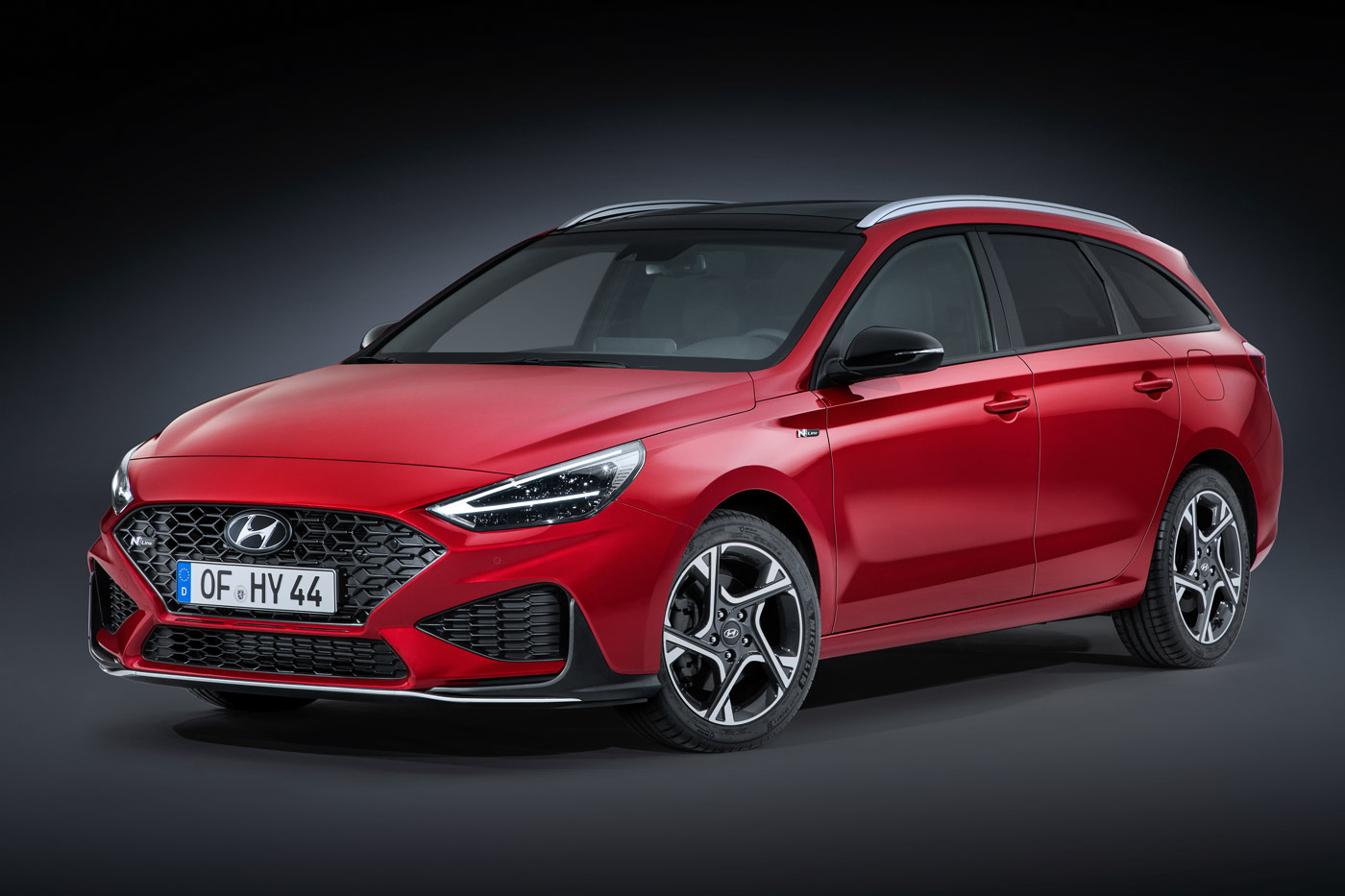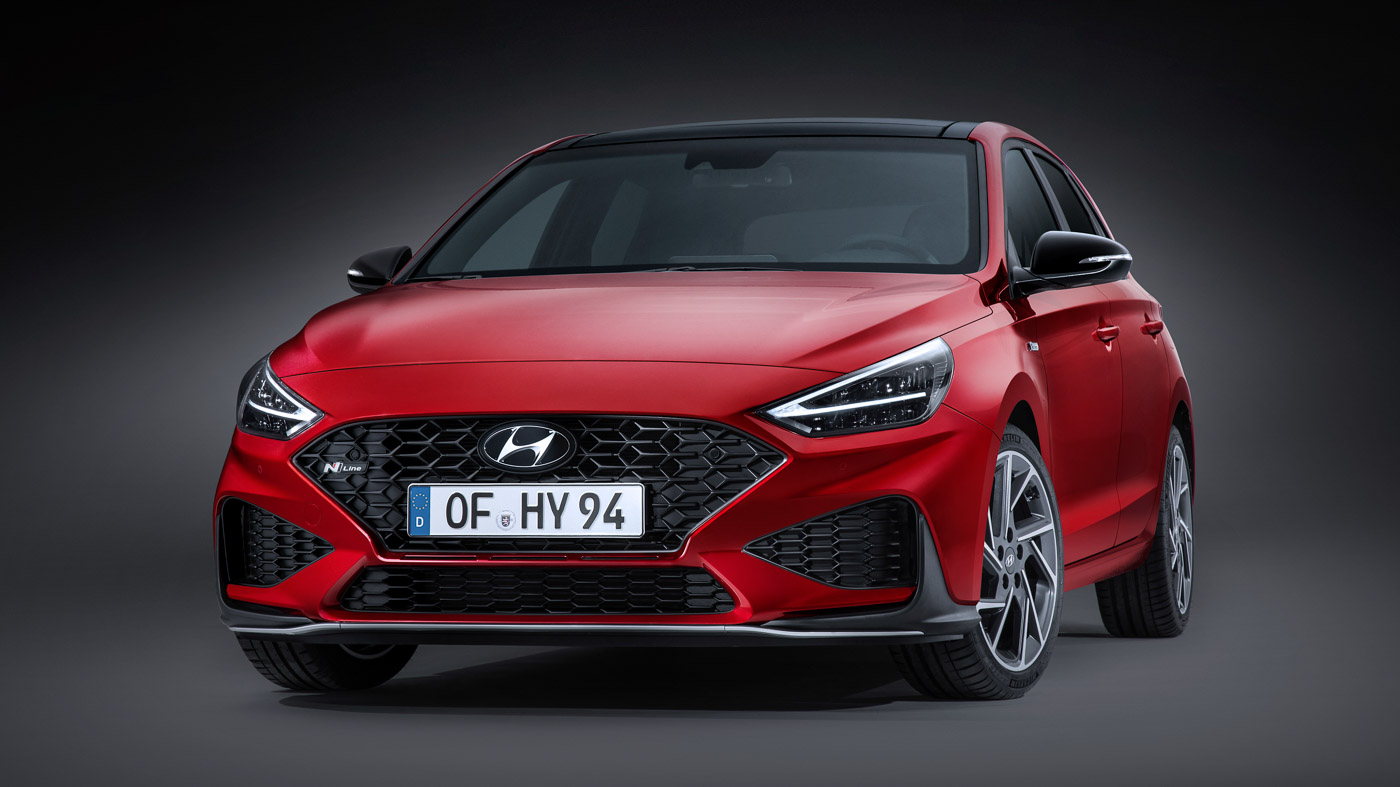Ahead of its launch at the Geneva Motor Show next month, Hyundai has released some new photos and details of the new Hyundai i30 facelift for us to pore over.
Styling wise, the i30 gets a redesigned front fascia, featuring a wider grille with a 3D pattern to emphasise the wider-looking stance of the car.

The headlights have been reshaped for a slimmer design, along with a new V-shaped signature LED daytime-running lights – in line with Hyundai’s new design language, as seen on the all-new i20.
Over at the rear, the i30 hatchback receives a new bumper design, which Hyundai says was developed to improve aerodynamic performance. The LED rear combination lamps also get a V-shape light signature for a symmetrical effect between the front and the back.

The updated Hyundai i30 sits on either 16-inch or 17-inch redesigned diamond-cut alloy wheels.
Previously only available on the hatchback or fastback body style, the i30N-inspired N Line trim is now available for the first time on the i30 Wagon.

The trim package has undergone a comprehensive design update, which includes a wider lower central grille, along with side air vents with floating wings for improved aerodynamic performance.
The N Line also gets a completely redesigned rear bumper, featuring a rear diffuser gives the i30 a sportier stance, along with the repositioned fog lights. The i30 with N Line package also comes with new 17-inch or 18-inch wheel designs.
The N Line treatment doesn’t just stop there too, with tuning updates available for the suspension and steering of the i30, in combination with the 1.5 T-GDi (160 hp) and 1.6 Diesel (136 hp) engines for a sportier driving experience.
Moving inside, the aesthetic changes are less pronounced. The air vents have been redesigned for a “more refined and modern” look, along with new interior garnish colours and seat upholstery options.

The driver gets a new seven-inch digital instrument cluster, while the infotainment display has been updated to a 10.25-inch unit with Apple CarPlay and Android Auto connectivity.
Hyundai says that starting in summer 2020, wireless phone mirroring will be supported, complementing the wireless charging pad in the i30.

As with the i20, the new i30 facelift also comes with Hyundai’s Bluelink technology, which allows the owner to obtain live information and control the car through a mobile application.
As standard, the i30 comes with a five-year free subscription to Bluelink and Hyundai LIVE services (real-time traffic information by TomTom).

The Hyundai i30 facelift also gets a boost in the safety department, with the improved Hyundai SmartSense active driver assistance suite. The suite now includes new features such as Lane Following Assist, Rear Collision-avoidance Assist, Leading Vehicle Departure Alert, and Blind Spot Collision-avoidance Assist.
The Front Collision-avoidance Assist has also been updated, and can now recognise bicycles on the road, in addition to vehicle and pedestrian detection. Other features of the suite include Driver Attention Warning, High Beam Assist, and Intelligent Speed Limit Warning.

The updated Hyundai i30 features a total of six different powertrain options, starting with the newly-developed 1.5-litre engine generating 110 hp, paired to a six-speed manual transmission.
The 120 hp 1.0-litre T-GDI petrol engine will be available with a new seven-speed DCT gearbox, in addition to the previously-available six-speed manual.

A 48-volt mild-hybrid system is also available with this engine for improved fuel economy, available with a six-speed Intelligent Manual Transmission (iMT), or a seven-speed DCT.
The iMT decouples the drivetrain as soon as the driver releases the accelerator pedals, allowing the car to coast with either idle engine speed, or completely turned off to save even more fuel.

At the top-of-the-range, a 1.5-litre T-GDI engine comes as standard with the 48V mild hybrid technology, which is good for 160 hp. The powerplant can also be paired with either a six-speed IMT or a seven-speeder DCT.
As for oil burners, a 115 hp 1.6-litre diesel engine is available with either a six-speed manual or seven-speed DCT, while opting for the mild-hybrid system pushes the power output to 136 hp. As before, all 48V mild-hybrid variants are available with a six-speed manual or seven-speed DCT gearbox.
IMAGE GALLERY


















